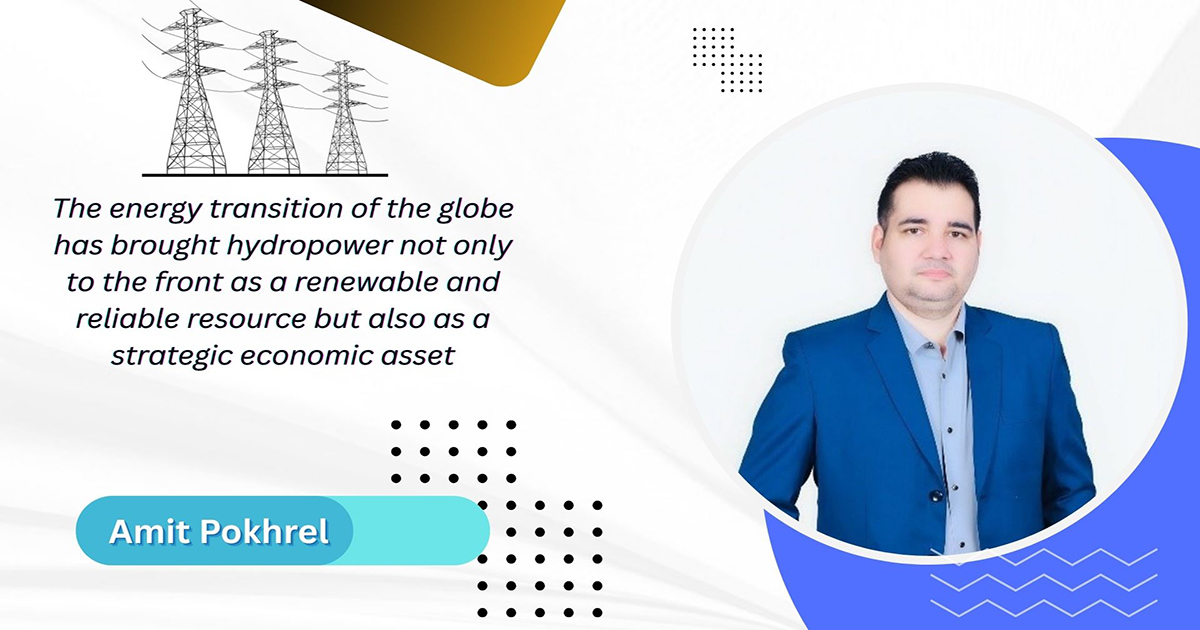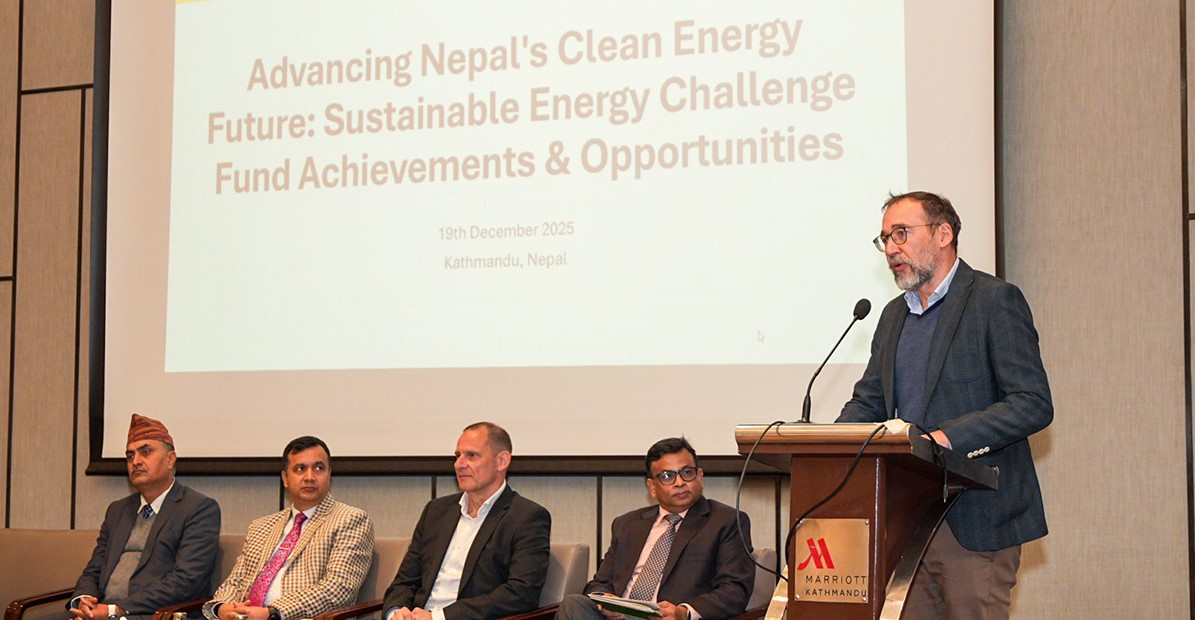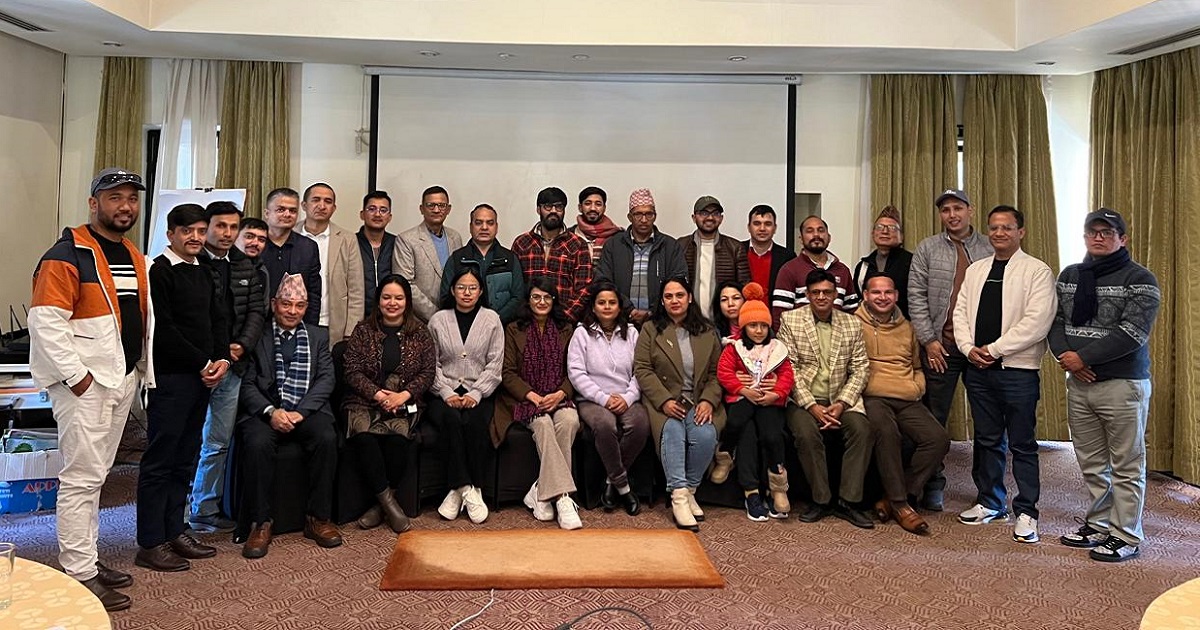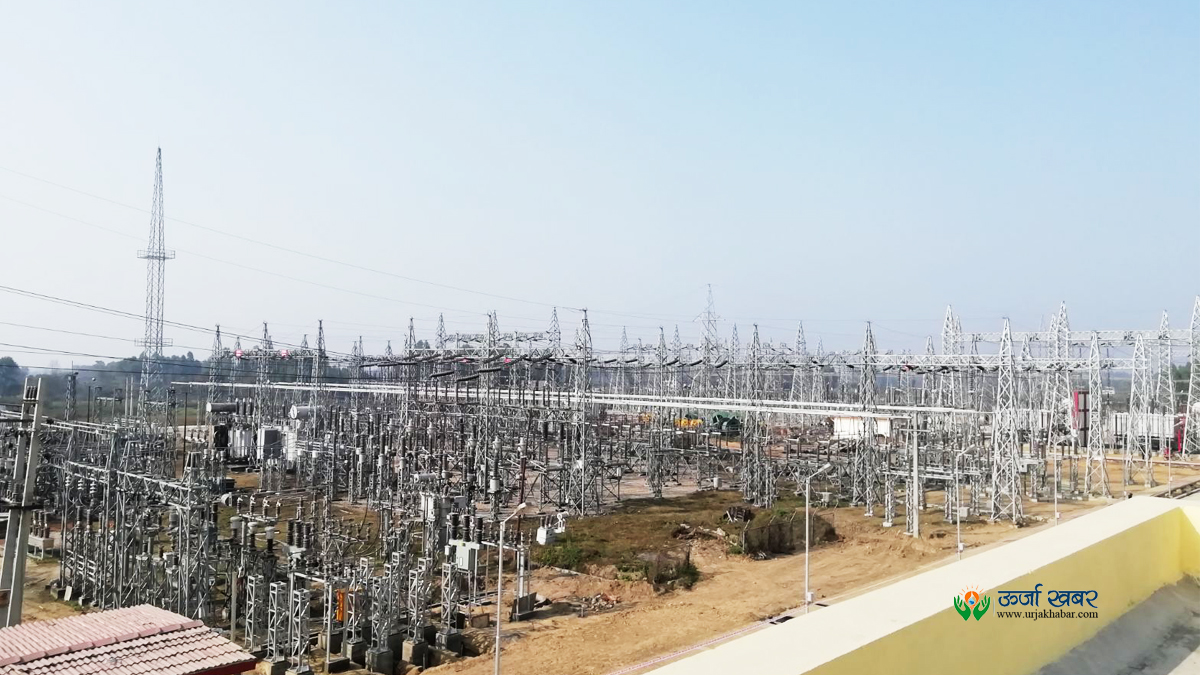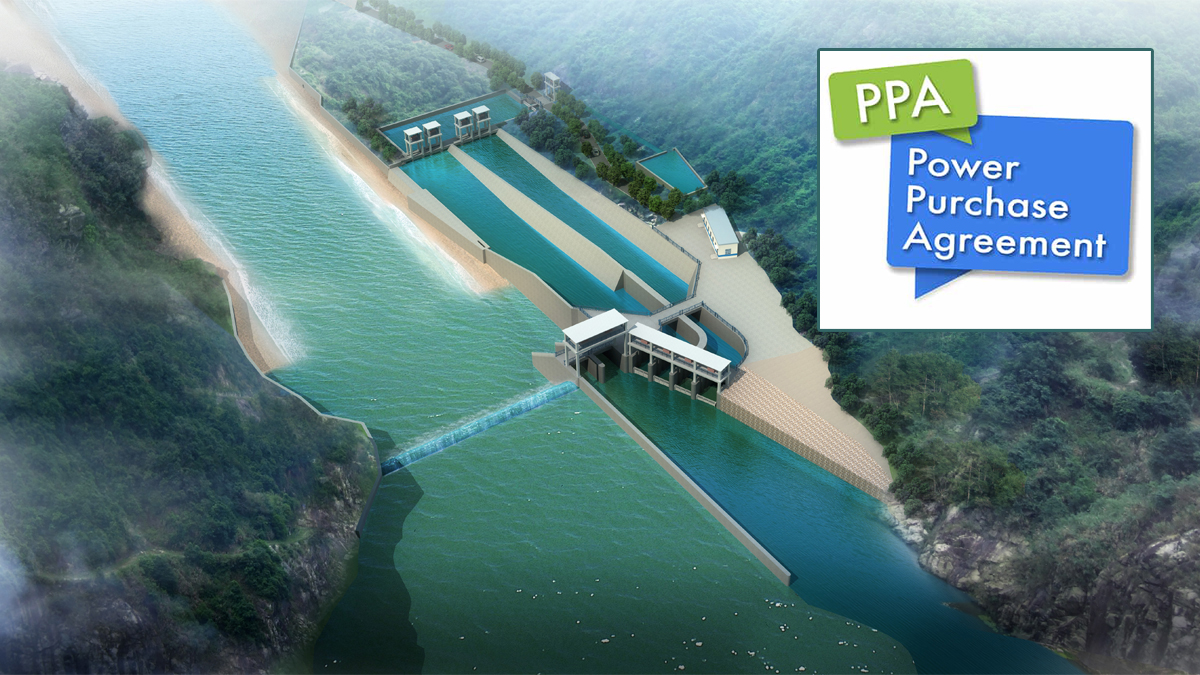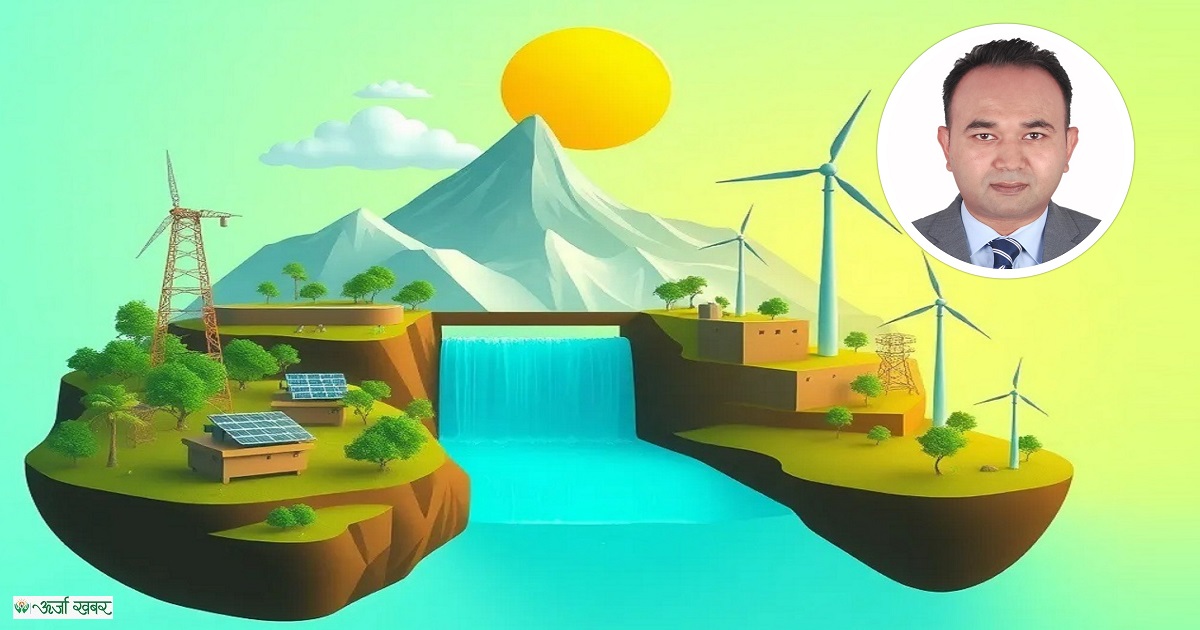Energy Update
Nepal's Solar Power Potential is 432 GW, Tenfold Higher than Hydropower
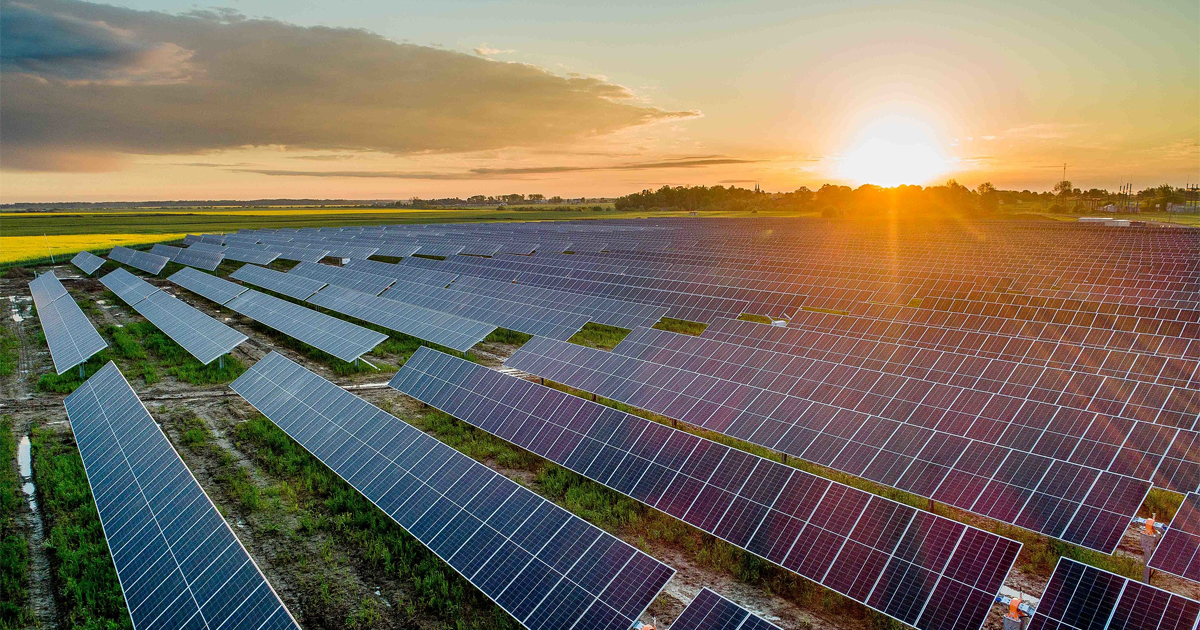
Kathmandu; Various studies have shown that due to sufficient sunlight, there is great potential for solar power generation in Nepal. According to the "Energy" report released by the Investment Board Nepal (IBN) in April 2024, Nepal receives solar radiation equivalent to the potential for producing 3.6 to 6.2 units of electricity per square meter.
Furthermore, the average insolation intensity is about 4.7 units per square meter per day, and there is sunshine on an average of 300 days a year. This indicates tremendous potential for harnessing solar energy in Nepal. As installation costs continue to decrease, solar technology is emerging as a viable and affordable solution for the country’s quality of power supply.

Studies have shown that even in some of the world's most developed countries, such levels of solar radiation are not available. Based on these facts, a recent study has been published with the support of the German Agency for International Cooperation (GIZ) an international enterprise owned by the German Federal Government.
As per the(According to the) study, significant solar energy production is feasible in the northern and western regions of Nepal. Based on data, installing 1 kW of solar photovoltaic capacity can generate an average of 1.85 MWh per day in Jomsom, 1.53 MWh per day in Kathmandu, and 1.45 MWh per day in Nepalgunj. Using this data, the total technical potential for solar energy production in Nepal is estimated at 432 GW (432,000 MW), which is tenfold higher than the economic and technical potential of hydropower (42,000 MW).

The information presented is based on a study conducted under the "Promotion of Solar Technologies for Economic Development (POSTED)" program, which is implemented jointly by the Alternative Energy Promotion Center (AEPC) and GIZ. The study, titled "Integrated Development of Hydro and Solar Energy for Energy Security, Accessibility, and Sustainability in Nepal," was summarized from a report released on Wednesday, June 12th. Dr. Shaligram Pokharel, the lead researcher and author, highlighted the findings during the program.
Nava Raj Dhakal, Managing Director of AEPC, highlighted that the Government of Nepal (GoN) has prioritized solar power generation in its Renewable Energy Policy. Likewise, he emphasized the country's commitment to adhering to international directives, including those set forth in COP-28.
Potential of Solar and Hydropower
In Nepal's energy (electricity) mix, there is a predominance of hydropower. Currently, approximately 95% of the total installed capacity (around 3100 MW) comes from hydropower.
Despite various individuals and organizations having conducted studies on Nepal's hydropower potential at different times, serious studies on solar power have been lacking. The study conducted by GIZ on solar energy is possibly the most comprehensive one to date. Additionally, a study by Dr. Hariman Shrestha in 1965 estimated Nepal's hydropower potential to be 83,000 MW.
Furthermore, according to a study conducted by the Water and Energy Commission Secretariat (WECS) in 2019, Nepal has been shown to have the capacity to produce more than 73,000 MW of hydropower. Similarly, a study led by Raghunath Jha and his team indicates a total potential of 67,000 MW, whereas a study by AI Bajracharya in 2015 estimates the potential at 103,000 MW.
Based on the report from the Ministry of Energy, Water Resources, and Irrigation on the Power Purchase Agreement (PPA) design discharge (Q free) opened about some month ago, Nepal's total hydropower potential exceeds 130,000 MW. Furthermore, recent public discourse and discussions indicate a potential deployment of up to 200,000 MW. Despite Dr. Shrestha's study identifying an economic and technical potential of 42,000 MW, the Government of Nepal has already approved licenses for more than 48,000 MW.
Despite the significant progress in hydropower development, it is clear that solar power potential has now surpassed it. Factors such as the ongoing decline in global solar panel prices and advancements in integration technology suggest that the future potential for solar power generation will continue to grow.
Rapid Growth of Solar Technology
Due to significant advancements in technology, solar photovoltaic (PV) electricity has become the most affordable source worldwide. Studies over the past few decades have shown a substantial decrease in the cost of solar technology, with prices plummeting by 99% from $106 per watt in 1976 to $0.36 per watt in 2019, as reported by a study from GIZ.
It is estimated that by the end of 2023, the price of solar PV panels will drop to $0.12 per watt. Similar to other commodities, the production cost of solar PV panels has decreased by approximately 20% for every doubling of production. Recently, entrepreneurs have expressed that around 20 ropani of land are required to produce 1 MW of solar power.
Due to relatively limited development of solar PV in Nepal, its prices are higher compared to other countries. However, studies indicate that Nepal stands to benefit as global solar prices decline. With concerted efforts by solar power developers to reduce costs, there is an expectation that solar development and expansion in Nepal will become more cost-effective.
The International Renewable Energy Agency (IRENA) prepared a report comparing the cost trends of renewable energy worldwide from 2010 to 2022. According to the report, the levelized cost of solar PV deployment and production (Levelized Cost of Energy, LCOE) has decreased rapidly. In 2010, the LCOE for solar PV was $0.445/kWh, which reduced to $0.049/kWh (an 89% decrease) by 2022. In contrast, during the same period, the LCOE for hydropower increased by 47% from $0.041 to $0.061/kWh.
Relation between the technology cost and the cumulative capacity installed
History of Solar Power in Nepal
Solar power usage in Nepal began in the 1980s, supported by Government of France. Solar power plants were installed in Tatopani, Kodari, Simikot, and Gamgadi, with a total capacity of 130 kW. Initially, solar photovoltaic systems were used to provide electricity in remote areas, but today, it has become fully commercialized.
The 680 kW solar power project at Dhobighat in Lalitpur, constructed by Kathmandu Upatyaka Khanepani Limited (KUKL), was connected to the national grid through a PPA for the first time. The electricity tariff of the solar project was aligned with Khanepani's tariff rates at that time.
According to the Nepal Electricity Authority (NEA), there are currently approximately 107 MW equivalent projects in various stages of operation, construction, and undergoing PPA processes. Among these, there are 16 solar projects totaling 82 MW that have been privately constructed, along with an additional 25 MW added by NEA in Trishuli, Nuwakot district. Additionally, under the auspices of the AEPC, projects with a combined capacity of approximately 100 MW have been constructed and are operational.
Furthermore, the Department of Electricity Development (DoED) has issued licence for feasibility studies on solar power production for 33 projects totaling 662 MW. Similarly, 20 projects with a capacity of 316 MW have applied for survey license for electricity generation in various locations across the country.
Comparing Nepal-Germany
According to the study by GIZ, in 2022, Germany generated 10% of its total electricity from solar power. By the end of 2023, Germany had produced 80 GW of electricity from solar. In contrast, Nepal lags far behind in this direction. When Germany introduced the first feed-in tariff for solar in the 1990s, the cost was 14,000 euros/kWh. Now, this cost has reduced by 7% to less than 1,000 euros/kWh.
As of April 2023, China leads globally in solar power generation with over 430 GW produced. Similarly, United States, Japan, India, and Germany following closely with 142 GW, 85 GW, 82 GW, and 80 GW installed solar capacity respectively. Nepal, situated between these large countries, must avoid complacency and strive to maximize its resources rather than lagging behind in this rapidly advancing field.
Gap in Policy Framework
According to commitments made under the Paris Agreement, Nepal aims to achieve net zero emissions by 2045 (2102 BS) focusing on the development of renewable energy with parallel of hydropower. Experts have emphasized on this. The 15th periodic plan of Nepal also mentions that by 2030, 20 percent of the energy consumption will be from renewable sources. In addition, the second Nationally Determined Contribution (2020) report states that Nepal aims to generate 5,000 MW of renewable energy (solar mini-grids, small hydropower, biogas, and wind) by 2030.
In COP-28, Nepal has also committed to reducing the use of petroleum resources and increasing investment in renewable energy. Therefore, in the 16th five-year plan, experts have suggested prioritizing the development of renewable energy. Additionally, Kushal Gurung, Director of Nepal Solar Farm, mentioned that the purchase price of solar energy is Rs. 5.94 per unit, which is the lowest among all. He added, 'At this time, the government must ensure that up to 30% of energy production comes from renewable sources.
However, Guru Prasad Neupane, a developer and expert in the sector, expressed dissatisfaction with the government for maintaining lower rates despite the global decrease in solar energy prices. He emphasized that the government should align its policies with global trends by streamlining processes and providing necessary facilities.
Conversation

Laxman Biyogi
Laxman Biyogi has been serving as the editor of Urja Khabar for the past seven years.
- Info. Dept. Reg. No. : 254/073/74
- Telephone : +977-1-5321303
- Email : [email protected]





